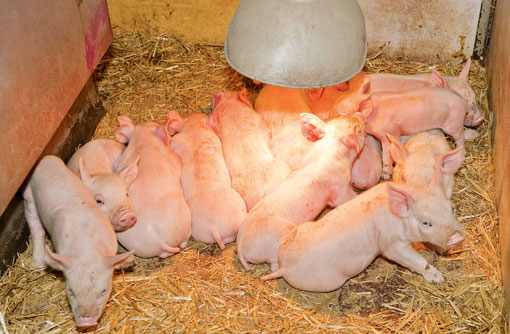Taking steps to slash energy costs

Rising power costs and environmental concerns should encourage dairy and pig farmers to alter management practices, but many are still incurring significant energy losses.
Pig sector
In the pig sector, heating and ventilation systems that are incorrectly set have a massive influence on energy costs.
Nick Bird, a specialist in pig unit heating and ventilation, describes it as an “invisible form of expense”.
“We have worked with some units that are wasting thousands of pounds a week on unnecessary energy,” says Mr Bird, a director of Farmex.
“Farmers think they can reduce energy consumption by installing more efficient fans but there is no comparison between any cost savings and a heating unit set at a constant 16C. The heating costs dwarf any savings made by efficient fans.”
Mr Bird says that any energy saving changes should not be based on generalised advice because every unit is different.
“We have been doing a lot of work on pig units and the take-home message is, if you don’t measure it, you can’t know.
“An awful lot of advice is based on the wrong model; farmers will buy stuff they have been told will save them money but that very often isn’t the case,” says Mr Bird.
Energy consumption on pig farms is split between heating in weaner rooms, heating in farrowing rooms and ventilation in grower and finisher rooms.
Mr Bird says farmers spend too much on heating farrowing rooms because their systems are poorly controlled.
And others use four times the minimum requirement of 1.5cu m an hour for heating weaning rooms. “There are many that run at twice that level but a lot who are three or four times that level. Given that a pig is in a weaner room for six to eight weeks, the correct amount of electricity a pig should be using is 2kW-4kW, costing between 20p and 30p. There are a lot of units that will be using 10kW-15kW.”
Dairy sector
The dairy sector, meanwhile, uses more energy than almost any other agricultural operation.
DairyCo estimates the average dairy farm uses between 200kW and 400kW of electricity for every cow a year and that the average cost of water is about £31 a cow a year, rising to more than £100 a cow a year on some units.
About half the total energy requirements are for milk cooling, operating vacuum pumps and heating water. Lighting and ventilation account for most of the remainder of energy used.
This means that a producer with a 150-cow herd could be paying a combined water and electricity bill of more than £7,500 a year – a figure that is set to rise as energy costs increase.
Ironically, the two largest energy costs for dairy farmers are associated with taking heat from milk and adding heat to water for cleaning.
Many farmers are discovering that an efficient way of heating water on their farms is to recover heat energy from the refrigeration condenser units.
A heat-recovery system captures heat from bulk tank compressors to preheat water. This heat would otherwise be wasted. The amount of energy recovered depends on the volume of milk produced and compressor running times.
Up to 50% of a farm’s water heating requirements can be met through heat-recovery systems.
On an average dairy farm, each milking point requires 18 litres of water at a temperature of 85C for circulation cleaning. This is normally heated in an insulated vessel using an electric immersion heater.
With a heat-recovery system, water can be preheated to 55C at no cost. According to the Carbon Trust, this represents a saving on heating costs of £4 a cow a year. On a 150-cow unit, the energy savings could equate to £650 a year.
With variable speed drives, there have been few studies on the lifetime energy reduction resulting from their installation but savings on energy ranging from 30-75% are quoted by installers.
| Can the CLA help you? |
|---|
| CLA continues to lobby with success to enable farmers to find alternative ways to generate income from their farm buildings and land. To find out more about how the CLA can help, visit the CLA team at Diversifarm. |
Livestock 2012
For more on the Livestock 2012 event, go to our dedicated Livestock 2012 page
